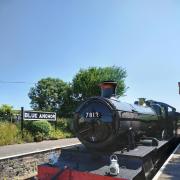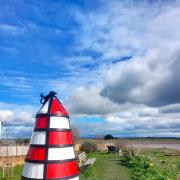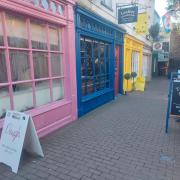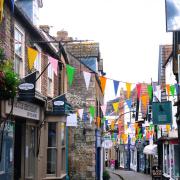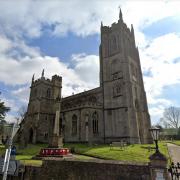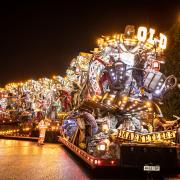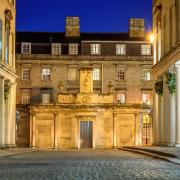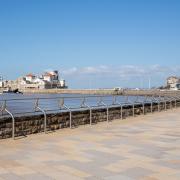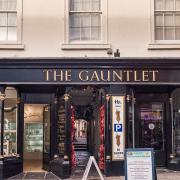Steve Roberts steps back in time to see how the Monmouth Rebellion impacted on our county

“Robert Abbot, William Cass and William Churchill, men of Somerton, joined the Duke of Monmouth to fight for ‘God and liberty’ in June 1685 and did not return home.” This sad, poignant inscription is on a plaque in the town of Somerton.
The Monmouth Rebellion was an attempt by James Scott, the 1st Duke of Monmouth, an illegitimate son of Charles II and a Protestant, to wrestle the crown of England from James II. James became King after the death of his elder brother, the same Charles II, but was crucially a Roman Catholic (or, at least, leaning dangerously towards Roman Catholicism).
Monmouth departed from Holland and headed for the traditionally Protestant south west of England, making landfall at Lyme Regis (Dorset) on June 11 with a small party of perhaps just over 80 men, including reputedly one Daniel Defoe, who scribed Robinson Crusoe. His route took him into Devon and then, with Royalist forces tracking him, into Somerset.
Monmouth’s growing force, albeit a poorly equipped ‘pitchfork army’, was now augmented by men from Somerset. The first mention of Somerset is at Chard, where Monmouth denounced the King. He was then ‘crowned’ at the Market Cross in Taunton, against the wishes of some of his republican followers, who wanted the monarchy gone for good. Nevertheless, many more supporters enrolled in Taunton as Monmouth’s army continued to grow.

Monmouth was in Bridgwater on June 21 1685, where he took up residence in the castle. His route then took him to Glastonbury (22) and Shepton Mallet (23), as the weather deteriorated. Royalist forces were closing in meanwhile and Monmouth’s ships had been captured, making any thought of escape impossible. It was ‘do or die’.
On June 24 the rebel force camped at Pensford in the north-east of the county. A possible turning-point occurred when Monmouth decided against attacking Bristol, possibly deterred by rumours there were more Royal troops in the vicinity than there were. Had he captured England’s then second city, the final outcome might have been different.
A skirmish at Norton St Philip on the 27th resulted in losses on both sides. I walked down Chevers Lane (once ‘Bloody Lane’) where the fighting took place. Monmouth’s next move was to Frome where he arrived on the 28th. I found ‘Monmouth Chambers’ where he stayed. Stalked continuously by Royal troops, the simple ‘soldiers’ making up the rebel force suffered a blow to morale here when news broke that a second rebellion in Scotland, planned to coincide with the western rebellion, had already petered out. The men of the West Country were ‘on their own’.
The rebels headed for Wiltshire, but faced with Royalist troops doubled back into Somerset, arriving in Wells on July 1. It was here the rebels damaged the Bishop’s Palace and the west front of the Cathedral, removing lead to make more ammunition, stabling horses in the nave and breaking windows.
With the Royalist army reinforced, its leader, Louis de Duras, 2nd Earl of Feversham sought to bring the rebels to battle. The plaque at Somerton tells a bit more of the story. “The Royal army under the Earl of Feversham occupied Somerton for two days in July 1685 just before the Battle of Sedgemoor.” Monmouth meanwhile had withdrawn to Bridgwater, where he ordered the town fortified, but soon realised the Royal army was close by on the edge of Sedgemoor, at the village of Westonzoyland, about three miles south-east across the moor. The battle for the crown would occur in the inhospitable Somerset Levels.
Monmouth’s ‘army’ had by now grown to between 6,000 and 7,000 souls, with the majority being Somerset peasants and miners, with smaller numbers from neighbouring counties. It was a measure perhaps of Monmouth’s desperation that he tried to launch a surprise night attack against the Royalist army, which involved a high-risk strategy of crossing the treacherous Somerset Levels in the darkness and wet, and some say, in the fog.
The last pitched-battle fought on English soil has been described many times, so suffice to say that Monmouth’s audacious attack failed, allegedly when a firearm was fired. Without the advantage of surprise, the rebel army was routed by the better-equipped and trained Royal army, with predictably heavy losses. The rebels never stood a chance. The alliterative ‘miserable, muddy and merciless’ has been used to describe what happened.
The church at Westonzoyland became a temporary prison for rebels, whilst the churchyard became ‘home’ to the relatively small number of Royal soldiers who perished. At Westonzoyland today, the church stands tall by the Sedgemoor Inn, which has one of the most colourful pub signs in the country, depicting scenes from the ill-fated campaign. The church has a small visitor centre devoted to the battle. A healthy walk away can be found the battlefield monument, with its chilling epitaph, “To the glory of God and in memory of all those who doing the right as they gave it, fell in the Battle of Sedgemoor, July 6 1685 and lie buried in this field or who for their share in the fight suffered death, punishment or transportation, pro patria” (for one’s country).
The Duke of Monmouth escaped, but was later captured, taken to London and executed. The aftermath of rebellion became as infamous as the act itself, with the assizes of Judge Jeffreys touring the West Country, dishing out summary judgement. In all some 320 rebels were executed with a further 800 deported to the West Indies. Assizes were held in Taunton and Wells, as well as other towns in the South West. The Somerton plaque makes one final, almost tearful, statement about the rebellion. “After Monmouth’s defeat seven of his followers were condemned to be hanged near here in the town.”
The King granted permission for convicted rebels to be sold into slavery and hundreds of Somerset men were transported. Somerset backed the rebellion more than any county and paid in full. Within four years survivors had been pardoned, but few could afford to return to England. Those who did told their families and communities of the hardships they had endured as slaves, and, in so doing, struck a blow for freedom. It was no coincidence that it was the town of Bridgwater, which became the first, in 1785, to petition parliament for the abolition of slavery. Somerset had not forgotten.




